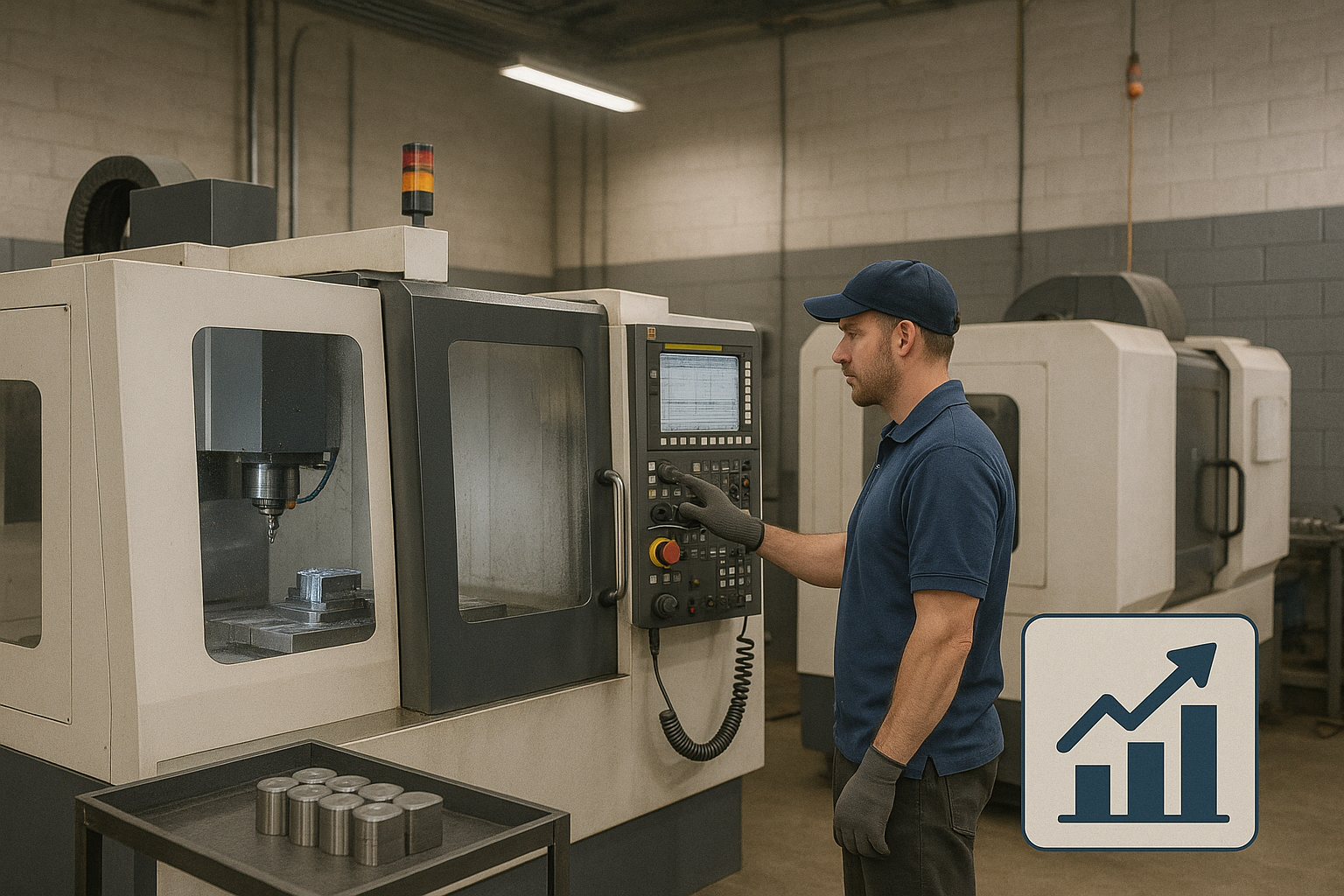
How to Calculate and Improve Manufacturing Cycle Efficiency
Introduction
In a competitive industrial environment, measuring what truly creates value is essential. Manufacturing Cycle Efficiency (MCE) helps identify waste, shorten lead times, and improve production planning.
It complements OEE (Overall Equipment Effectiveness), focusing not only on equipment but on the entire process.
What is Manufacturing Cycle Efficiency?
MCE represents the percentage of production time dedicated to value-added activities for the customer. It's a fundamental tool to distinguish between productive time and wasted time.
MCE Formula
MCE = Value-Added Time / Total Cycle Time
Example:
Out of 10 hours of production, only 2 hours add value:
MCE = 2 / 10 = 20%
This means that 80% of the time is non-productive.
Why It Matters
A high MCE means:
-
Less waste
-
A more stable OEE
-
Shorter lead times
-
Better synchronization of operations
It provides a strategic complement to OEE for a more comprehensive view of industrial performance.
MCE vs OEE vs Lead Time
| Indicator | What does it measure? | Objective |
|---|---|---|
| MCE | Useful time vs total time | Identify waste |
| OEE | Machine performance | Optimize production |
| Lead Time | Total time from order to delivery | Measure responsiveness |
Main Sources of Non-Productive Time
-
Waiting time – between workstations
-
Transport time – unnecessary material movement
-
Changeover time – to be reduced via the SMED method
-
Intermediate stock – which inflates lead time
-
Resource waiting – when operators or tools are unavailable
6 Strategies to Improve Cycle Efficiency
-
Map Value Streams
Use Value Stream Mapping to visualize value-added and non-value-added activities. It’s a great starting point for optimization. -
Reduce Waiting Time
Real-time production scheduling software helps avoid machine or operator idle time. -
Automate Processes
Implementing effective CNC programs accelerates value-added tasks. -
Reduce Changeover Time
The SMED method enables switching setups in minutes instead of hours. -
Improve Resource Allocation
Workforce planning software ensures operators and machines are available at the right time. -
Track Performance in Real-Time
With an OEE software, losses can be detected instantly. Data is centralized in KPI dashboards or production dashboards.
Tracking MCE Daily
For continuous improvement:
-
Display production dashboards in the workshop
-
Track cycle time vs. value-added time indicators
-
Use reports from CNC program monitoring
These manufacturing KPIs should be reviewed regularly to adjust priorities.
Conclusion
Manufacturing Cycle Efficiency is a strategic performance lever. It helps reduce waste, optimize machine-tool use, and improve human resource planning.
When combined with tools like OEE software, KPI dashboards, and smart scheduling, manufacturers can build an agile, cost-effective, and resilient system.
Looking for solutions to automatically track essential production KPIs to monitor and improve your operations? Try JITbase for free:






